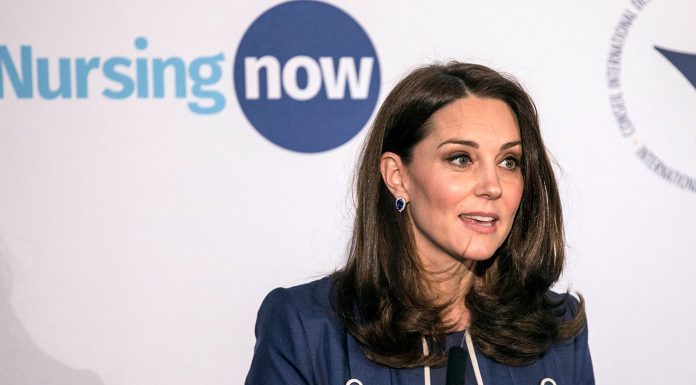They were responding to vacancy figures released to Radio New Zealand (RNZ) this week showing that in mid-May that there were nearly 100 nursing vacancies in acute mental health wards, just under 40 unfilled jobs in crisis assessment teams and 55 vacancies for psychiatrists in district health boards across the country.
The leaders said high vacancies were not new to the mental health sector but there had been an increase in the demand and complexity of acute mental health clients who often also face housing, addiction and other issues impacting on their wellbeing.
Nursing was investing in growing ‘its own’ through the new entry to specialist practice programmes but leaders believed more early intervention support was also needed in the wider primary health and social services sector to help reduce demand for acute mental health services.
Elaine Wogan, chair of the national Directors of Mental Health Nursing group, said it was obviously of concern when there were high vacancies as that challenged the affected services. She said there had also been a significant increase in demand for services. “Certainly nurses are tired and feel a little overwhelmed at times because we have over-occupancies in our inpatient units – though that ebbs and flows,” said Wogan.
Gina Soanes, chair of the New Zealand Nurses Organisation’s Mental Health Section, said members were feeling pressured – particularly in the acute mental health sector – not only by the vacancies but the flow-on effect of lack of back-up staff to fill-in for nurses when they are sick. “There are a lot of nurses who don’t take sick leave because there are not enough people to cover them but (eventually) get sicker or there is pressure on their families as well.” She said it was also hard to get job satisfaction when there are so many vacancies and nurses were stretched to deliver services. And even if all vacancies were filled the staffing numbers might still not be enough to meet the level of demand, believed Soanes.
Anne Brebner, chair of the College of Mental Health Nurses, cautioned people from over-reacting to the vacancy statistics. She said nearly 100 nursing vacancies spread over the 19 DHB acute inpatient mental health units across the country was not unusual or something the sector was unaware of. “We’re constantly wanting to address recruitment.”
Health Minister Jonathan Coleman said in May that over the past decade demand for secondary mental health and addiction services had increased from around 96,000 people to almost 168,000 – a 75 per cent increase.
Canterbury DHB, according to the figures reported by RNZ, had the highest acute inpatient nursing vacancies, about 30, as the region responds to unprecedented growth in demand for specialist mental health services since the Canterbury quakes.*
The next highest nursing vacancy numbers, according to the data presented to Radio New Zealand were in Auckland, Northland and Counties Manukau DHBs. The highest proportion of CAT team vacancies were in Capital & Coast and Tairawhiti DHBs. While the worst hit with psychiatrist shortages were Tairawhiti, Hawke’s Bay and Counties Manukau.
Brebner said the mental health sector was struggling to recruit nurses in particularly the biggest cities, as DHBs in smaller centres with lower house prices and rents could offer the same salaries as centres like Auckland.
Wogan, who is the mental health nursing leader at Bay of Plenty DHB, agreed that the reality was that the affordability of living in the Auckland area, and perhaps Canterbury, would impact on recruitment to those DHBs.
Brebner, who is also Clinical Nurse Director- Mental Health and Addictions for Counties Manukau Health, said the DHB’s mental health nurse vacancies were running at 8-9 per cent, which was similar to recent years. She said Counties had responded by increasing the number of new graduates it had taken on into its NESP (new entry to specialist practice) programme, which had been above its funded allocation.
She said the College was also aware of issues around the ageing mental health nursing workforce and with the national directors of nursing and Te Pou had been looking into how to support older nurses who want to stay in the paid workforce including looking at flexible rostering and making best use of experienced staff’s mentoring and supervision skills.
“The College is also trying to grow the nurse practitioner workforce in mental health services across the country to bridge that very high end acute caseload work to support the medical staff with some of their shortages.”
All the leaders believed that the current policy push to more early intervention and improved access to primary health and social services sector was important to help reduce the number of people requiring specialist acute mental health services. Wogan and Soanes said social issues like housing, p-addiction and low incomes were impacting on people’s physical and mental health and patients requiring services from acute mental health teams has increasingly high and complex needs.
“The demand for MH and addiction services needs to sit across the whole of the health journey and the wider health workforce,” said Wogan. “Not just in our hospitals it needs to be in our primary health settings..and working in partnership with the NGOs and upskilling some of our workforce.
Brebner said the College had put a lot of time and energy into its mental health credentialing programme to support practice nurses develop their knowledge and skills in working with people presenting with mental health-related issues.
“There’s an opportunity to maybe do more of that to ease and address the issues much, much earlier so they are not developing into needing acute care.”
*In February the DHB reported that a 39 per cent increase in adult specialist mental health presentations saw its mental health teams seeing 700 more clients each month than before the quakes. The Press reported in March that the number of nurses working in specialist mental health services had increased by about 10 per cent since 2012 to around 550 FTE (full time equivalents) last year.






















